lies like truth: January 2011 Archives
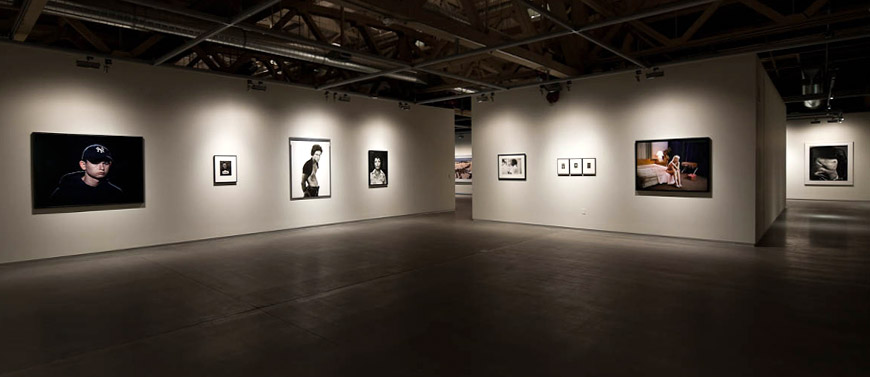 Today I have two views to share on art happenings I've experienced over the last 24 hours and a piece of news. First the views:
Today I have two views to share on art happenings I've experienced over the last 24 hours and a piece of news. First the views:1. The quality that I appreciated the most about Next to Normal, Tom Kitt and Brian Torkey's histrionic musical about a family's struggle to cope with the mental breakdown of one of its members - wife and mother, Diana - was the vocal contrast between two of the performers, Alice Ripley as the troubled Diana and Asa Somers as her long-suffering, gentle husband, Dan. Ripley's voice is not what you would call lovely. The performer sings with a honking burr that would turn off any classical technique-focused vocal pedagogue. Her notes are often just a tiny bit flat and her vowels are way off. For example, when other performers on stage sing 'eh', as in "fetch", she sings "ih" as in "fitch." Her crucified tones make her sound like a cross between Marianne Faithfull and and a donkey. Yet the effect of this voice is mesmerizing. It is so full of pain and passion. The character's mental state is captured entirely by the quality of Ripley's voice. At the other end of the spectrum is Asa Somers, who plays Diana's mild-mannered spouse with a tenor that is as clear, ringing and pure as a choirboy's. It's unusual to hear a male singer in an American musical perform with such a smooth and straightforward tone. Somers keeps his vibrato in check. The nasal quality that is so often the bedrock of musical theatre vocal timber is completely absent from his delivery. The voice perfectly communicates the essence of Somers' character -- his patience, love and restraint. The contrast in quality between these two voices is what makes Next to Normal tolerable. Otherwise, the show, though interesting for its unapologetic look at family dynamics, left me cold.
2. I attended an exhibition of photographic works from the collection of Randi and Bob Fisher today at Pier 24, a gallery space on the San Francisco waterfront which opened a year ago or so but which I only visited for the first time today. The collection is formidable, featuring iconic and lesser known but captivating photographs by the likes of Man Ray, Lee Friedlander Andreas Gursky, William Eggleston, Robert Frank, Walker Evans, Diane Arbus, Helen Levitt and others. What interested me the most, however, on this my first visit to the cavernous exhibition halls, was the balance between feeling irritated and entranced by the experience. On the one hand, I was annoyed by the lack of user-friendly information about the art on display provided by the organization. The artworks are the only things that adorn the plain grey gallery walls. There are no explanatory texts or even tags by the photographs denoting titles, artists' names and the other usual information you'd expect to read. Unless you're a photography expert, you're completely at the mercy of a confusingly organized "guide book" provided at the front desk, which comes with a map on page 3 that is not very helpful. On the other hand, the pleasure of experiencing so much great work unmediated is wonderful. My eyes tend to be drawn to texts when I'm in a museum and I often find myself spending as much time reading descriptions of the works on display as I do looking at the works themselves. There's something very immediate about being forced to focus entirely on the photographs in the gallery. Also, having to book ahead to visit the gallery adds a sense of occasion to experiencing Pier 24. Numbers are limited so you have space to walk around quietly and can pause in front of a single work for as long as you like without risking being elbowed out of the way. Finally, you can't beat the fact that the gallery is free to visitors.
Finally, for my news: I am going to be starting a regular arts criticism gig for The Bay Citizen the week after next. Look for my reviews of a wide array of local arts happenings on the publication's website every other week. I will continue to write my column for The New York Times (and Bay Citizen) on alternate weeks as usual.
 Today I have two views to share on art happenings I've experienced over the last 24 hours and a piece of news. First the views:
Today I have two views to share on art happenings I've experienced over the last 24 hours and a piece of news. First the views:1. The quality that I appreciated the most about Next to Normal, Tom Kitt and Brian Torkey's histrionic musical about a family's struggle to cope with the mental breakdown of one of its members - wife and mother, Diana - was the vocal contrast between two of the performers, Alice Ripley as the troubled Diana and Asa Somers as her long-suffering, gentle husband, Dan. Ripley's voice is not what you would call lovely. The performer sings with a honking burr that would turn off any classical technique-focused vocal pedagogue. Her notes are often just a tiny bit flat and her vowels are way off. For example, when other performers on stage sing 'eh', as in "fetch", she sings "ih" as in "fitch." Her crucified singing sounds like a cross between Marianne Faithfull and a donkey. Yet the effect of Ripley's voice is mesmerizing. It is so full of pain and passion. Her character's mental state is captured entirely by the quality of the actor's voice. At the other end of the spectrum is Asa Somers, who plays Diana's mild-mannered spouse with a tenor that is as clear, ringing and pure as a choirboy's. It's unusual to hear a male singer in an American musical perform with such a smooth and straightforward tone. Somers keeps the vibrato down. The nasal quality that is so often the bedrock of musical theatre vocal timber is completely absent from his delivery. His voice perfectly communicates the essence of Somers' character -- his patience, love and restraint. The contrast in quality between these two voices is what makes Next to Normal tolerable. Otherwise, the show, though interesting for its unapologetic look at family dynamics, left me cold.
2. I attended an exhibition of photographic works from the collection of Randi and Bob Fisher today at Pier 24 (pictured), a gallery space on the San Francisco waterfront which opened a year ago or so but which I only visited for the first time today. The collection is formidable, featuring iconic and lesser known but captivating photographs by the likes of Man Ray, Lee Friedlander, Andreas Gursky, William Eggleston, Robert Frank, Walker Evans, Diane Arbus, Helen Levitt and others. What interested me the most, however, on this my first visit to the cavernous exhibition halls, was the balance between feeling irritated and entranced by the experience. On the one hand, I was annoyed by the lack of user-friendly information about the art on display provided by the organization. The artworks are the only things that adorn the plain grey gallery walls. There are no explanatory texts, let alone tags by the photographs denoting titles, names of artists, and the other basic information you'd expect to read. Unless you're a photography expert, you're completely at the mercy of a confusingly organized "guide book" provided at the front desk, which comes with a map on page 3 that is not very helpful. On the other hand, the pleasure of experiencing so much great work unmediated by the usual distractions is wonderful. My eyes tend to be drawn to texts when I'm in a museum and I often find myself spending as much time reading descriptions of the works on display as I do looking at the works themselves. There's something very immediate about being forced to focus entirely on the photographs in the gallery. Also, having to book ahead to visit the space adds a sense of occasion to experiencing Pier 24. Numbers are limited so you have space to walk around quietly and can pause in front of a single work for as long as you like without risking being elbowed out of the way. Finally, you can't beat the fact that the gallery is free to visitors.
Now for the news: I am going to be starting a regular arts criticism gig for The Bay Citizen the week after next. Look for my reviews of a wide array of local arts happenings on the publication's website every other week. I will continue to write my column for The New York Times (and Bay Citizen) on alternate weeks as usual.
 On Friday, at an interior design showcase benefitting a bunch of LA-based arts organizations and education programs which took place at a soon-to-be-renovated, bulbous mansion in Pasadena, I found myself chatting with a woman who is part of the core committee that organizes the event and others like it and then funnels off the funds raised to the non-profit groups supported by her team's endeavors.
On Friday, at an interior design showcase benefitting a bunch of LA-based arts organizations and education programs which took place at a soon-to-be-renovated, bulbous mansion in Pasadena, I found myself chatting with a woman who is part of the core committee that organizes the event and others like it and then funnels off the funds raised to the non-profit groups supported by her team's endeavors.The woman clearly put a lots of time and energy into her volunteer work, which is laudable. However, I was flabbergasted by her opinions about the staffing of the non-profit organizations that she supports.
"I don't understand why non-profit arts organizations have salaried staff," she said. "I work for free. Everyone who does charity work should do the same."
I was so shocked that I momentarily lost my ability to speak.
By the time I came to my senses, my friend Sarah, who managed to regain composure earlier than I did, massaged the woman's ego further by saying that she had heard about an arts organization in LA that had imploded because the people who ran the organization were being paid six-figure salaries. Of course, this isn't an isolated case, and it fed perfectly into the argument that the Pasadena woman was making.
Sarah, it turns out, was as indignant as I was at the thought that people who work in non-profit arts organizations (which is virtually every arts worker in the land besides gallerists and Hollywood producers) should do so for free.
Very few arts workers are trust fund babies and/or trophy wives. The woman is clearly as far out of touch with reality as her botoxed lips are out of touch with her face.
But it's also true, as Sarah pointed out, that some non-profits are badly managed by executives with disproportionately high paychecks.
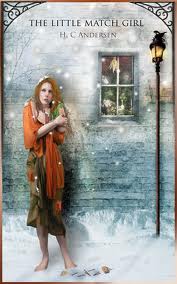 While driving to Los Angeles and back this past weekend, I had a good long think about how best to leverage my limited resources to get the most out of social media.
While driving to Los Angeles and back this past weekend, I had a good long think about how best to leverage my limited resources to get the most out of social media.I've been a Twitter hold out for too long, reasoning that I simply didn't have the bandwidth to Tweet as well as post on this blog five days a week. But now I see that I can't stay in the arts journalism conversation without developing a presence on Twitter. And after a bit of experimenting over the weekend, I also realize that I quite enjoy the quick and dirty nature of Tweeting.
But how to make room for this extra activity without losing my mind, which already feels like an overstuffed suitcase?
One answer is to be smarter about blogging.
For more than five years, I've stuck to my routine of blogging five days a week, whether I have something interesting to say or not. I've only made exceptions to this rule while traveling. But this approach, though the routine feels good, may be a less productive use of my time and energy at this point than combining occasional blogposts written for newsworthy or thought-provoking reasons with occasional Tweets.
I'll experiment with this strategy for a while and see what happens at any rate.
Oh, and by the way, you can find me on Twitter at @chloeveltman.
In other news, I must say a few words about the amazing Jacaranda Music Series in Santa Monica, which I experienced for the first time on Saturday night. I don't think I've ever attended another chamber concert series like it. Artistic director Patrick Scott is extremely smart about putting together a program that provokes the mind as well as the heart and soul.
Saturday evening's lineup, entitled "Perilous Balance", explored contrasts in a way that felt thrillingly unsettling.
An organ and trombone piece by Alfred Schittke, "Sound and Resound" (1983) showed us how much sympatico exists between these two unlikely musical instruments and yet kept tipping over into strange sonic terrain with perfect octave intervals collapsing in on themselves.
Elliott Carter's "Sonata for Flute, Oboe, Cello & Harpsichord" (1952) oscillated between smooth lines and angular, jarring tonalities.
A solo organ piece by Sophia Gubaidulina, "Light and Darkness" (1976), sparkled at the top and throbbed like an engine at the bottom.
In her atmospheric string quartet, "Night Fields" (1994), Joan Tower also explored the tipping-point between two states of light and darkness, creating a landscape that felt as murky as it did luminescent.
And "The Little Match Girl Passion," David Lang's Pulitzer Prize winning work for SATB vocal quartet and percussion, presented, with perfect icicle stillness, the moment when life becomes the afterlife.
If I lived in Southern California, I would attend the Jacaranda Music Series religiously.
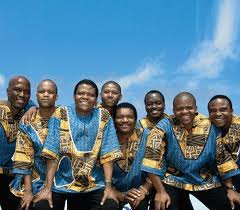 I wasn't expecting to feel so discombobulated by the Ladysmith Black Mambazo concert last night at Yoshi's in Oakland. After all, this is a stellar vocal group from South Africa whose bevelled, tight-knit sound western US audiences have grown to know and love ever since the mid 80s when Paul Simon employed the ensemble's artistry on his Graceland album.
I wasn't expecting to feel so discombobulated by the Ladysmith Black Mambazo concert last night at Yoshi's in Oakland. After all, this is a stellar vocal group from South Africa whose bevelled, tight-knit sound western US audiences have grown to know and love ever since the mid 80s when Paul Simon employed the ensemble's artistry on his Graceland album.At this point in its 51-year-history though, Ladysmith hardly needs to defer to Simon, and yet for some reason the singers feel obliged to do so.
The fact that "Homeless," the song that was the thoughtful centerpiece on Graceland all those years ago, was used as the climax of last night's set, made me feel a bit sad. It's true that there are few commercial artists in the world that can get away without playing at least one of their best-known crowd-pleasing songs during the course of any show. (For instance, Neil Young wasn't above playing 'Helpless' the other day at a gig in San Francisco.) But usually, artists have a bunch of different emblematic tracks to choose from once they've been around for as long as Ladysmith.
"Homeless" is unfortunately the only track that is truly well-known enough to American audiences. So Ladysmith pulled it out, of course mentioning Paul Simon in the process.
Frankly, the Simon connection is not why we pack venues like Yoshi's on a Wednesday night (for two sets no less!) to hear Ladysmith make music at this point in time.
The richness of the sound, with all its strange and wonderful accompanying choreography and unexpected vocal sound effects conjuring up a completely different way of life that's much more closely connected to farming and nature than ours is enough to keep crowds coming.
It's time for Ladysmith Black Mambazo to put Paul Simon to rest.
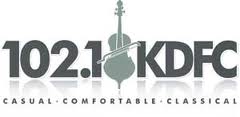 The big news in the US classical music radio world today is that the Bay Area's only classical music radio station, KDFC, has gone from being a commercial company to a non-profit entity. The University of Southern California bought the station from Entercom. USC's takeover became effective yesterday, January 18.
The big news in the US classical music radio world today is that the Bay Area's only classical music radio station, KDFC, has gone from being a commercial company to a non-profit entity. The University of Southern California bought the station from Entercom. USC's takeover became effective yesterday, January 18. An article in today's San Francisco Chronicle has all the main details.
KDFC was one of the last of the big classical music stations in the US to support itself using the paid advertising model. Now it'll be running pledge drives to earn donations to stay alive.
I am excited about what the change might bring. According to the Chronicle, the shift to the non-profit model will bring the station into a closer relationship withe the brilliant Los Angeles classical music station KUSC. I am hoping that the ties to this inventive broadcaster -- and the non-profit model in general -- will make KDFC run more interesting programming as it will not have to compete quite so openly with non-classical-music-oriented commercial stations as it did in the past.
But I suspect that it'll take more than a business model change for KDFC to really break through its image as a purveyor of non-envelope-pushing, middle-of-the-road music, the place you go on the dial for "Casual Comfortable Classical" music as the station's slogan proclaimed.
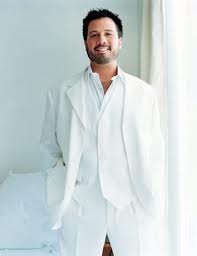 A conversation with my friend Laetitia following the countertenor David Daniels' concert with the Philharmonia Baroque Orchestra in Berkeley on Saturday night reminded me of oenophiles comparing notes about wines.
A conversation with my friend Laetitia following the countertenor David Daniels' concert with the Philharmonia Baroque Orchestra in Berkeley on Saturday night reminded me of oenophiles comparing notes about wines.We agreed about Daniels' effort that evening: A lackluster performance of Vivaldi's Stabat Mater (Daniels' just didn't seem to like the music all that much and was overly uptight in his delivery and carriage) was followed by an utterly captivating approach to several arias from the Handel operas Agrippina, Radamisto, and Il trionfo del Tempo e del Disinganno. Daniels came to life in the second half of the concert. He is such an emotional singer and clearly much more suited to performing repertoire that is overtly dramatic than muted, church-oriented music.
Concert appraisal aside, where Laetitia and I disagreed somewhat, was on what makes a great countertenor.
We're both immense fans of Andreas Scholl, a singer who can still sound like a six-foot-something, barrel-chested bloke while pinging those high Fs and Gs.
But while I love the thrilling, faultless pyrotechnics of Philippe Jaroussky, that singer leaves Laetitia cold. "He's just too perfect for his own good," she said. "He sounds too much like a woman."
I don't think Jaroussky sounds girly, actually, though his voice is as perfect as a rose, petals and thorns combined.
Laetitia isn't overly impressed with Daniels either. He's not top of my list, but I appreciate the plummier sound he makes. He reminds me of an old-school countertenor like Alfred Deller.
Excellent vintages, all.
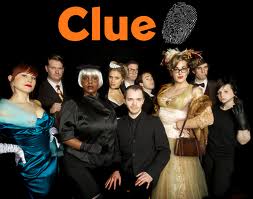 A genre of theatre that seems to be very popular in the Bay Area is plays that are based on movies. From Hush Up Sweet Charlotte (a drag take starring Varla Jean Merman on the 1960s Bette Davis thriller Hush...Hush, Sweet Charlotte) to Point Break Live! (a show relying on heavy audience participation based on the 1991 Keanu Reeves surf action movie), local audiences have relished the fun of seeing their favorite cult screen kitsch transformed into stage madness.
A genre of theatre that seems to be very popular in the Bay Area is plays that are based on movies. From Hush Up Sweet Charlotte (a drag take starring Varla Jean Merman on the 1960s Bette Davis thriller Hush...Hush, Sweet Charlotte) to Point Break Live! (a show relying on heavy audience participation based on the 1991 Keanu Reeves surf action movie), local audiences have relished the fun of seeing their favorite cult screen kitsch transformed into stage madness.The recipe is a relatively fool-proof one: Take over-the-top film with mass-market appeal that reminds hipsters of their childhood days, mix in the immediacy of live theatre, throw in a crowd-pleasing gimmick or two, and Hey Presto, you have a certifiable hit on your hands.
Boxcar Theatre has picked up on this trend with its new production of Clue, a play based on a 1985 black comedy which in turn was inspired by the Clue murder-mystery board game (or Cluedo to people who grew up outside of the US.)
Boxcar's production has a lot of heart in it and it makes for an entertaining way to spend a couple of hours. What I love best about the production is the use of the space. The company has turned their small black box in a particularly grubby bit of SOMA into a visually-arresting three-dimensional boardgame. The audience looks down on the stage from a four-sided specially-constructed gallery like players looking at a Clue board from above. The space below is divided into small squares representing the different rooms in the Clue game and a rabbit warren of concealed tunnels runs between various doors and secret entrances. Watching the actors pop in and out of fireplaces and refrigerators is tantalizing. The cast does a great job of playing up the silliness of the source material. It's a colorful production which will doubtless draw in the crowds throughout the already-extended run.
But beyond being a bit of a hoot and visually bombastic, the director/playwrights (and Boxcar co-artistic directors) Peter Matthews and Nick Olivero miss out on an opportunity to explore the more intriguing metaphors that the multi-layered play-film-boardgame concept could potentially bring to the stage. What's the difference between murder as it's played out on stage versus a movie versus a board game? And what's the audience's relationship to the action?
Here's what student/guest blogger Alexis Snyder had to say about it:
I'm Alexis Snyder. I was chosen to be one of the two featured student artists of the day at GRAMMY Career Day, held in San Francisco, California, at the San Francisco State College. This day was meant for students who are planning on having a career in the musical field to be able to experience it first hand. Everyone went to a workshop of their choice which was lead by a professional, who gave tips, advice, and answered any questions you had for them. As a featured artist, I was chosen out of the many attendees to have one of my personally recorded songs played for an audience of approximately 700 people on an incredible sound system. After they played my song, I was to receive feedback from each one of the panelists sitting next to me, who was Justin Berger, Ned Hearn, Jocelyn Kane, Enrique Gonzalez Müller and Thao Nguyen.
All of the producers, volunteers and panelists were very supportive, friendly and of course, inspiring! I received handshakes and smiles, which made the day a little better than it already was. The sound system they used was outstanding, and being in the audience was also a delight. The theater is very professional, with hundreds of red cushioned seats, like a movie theater and the lighting was just right.
The first thing that happened was Thao Nguyen, a singer/songwriter, performed for all of the students attending the special day, and then the two featured artists went up, had their songs played and received feedback. Then, we all went to the workshop of our choice, ate lunch, then went back to the theater to watch the SF Ballet Orchestra perform as well as a local Band Poplyfe, and student artists who attended also.
The workshops they had available to choose all seemed like they would've been a delight to experience, like: Business Careers in Music, DIY Dos and Don'ts, Engineering: Your Own Opinion Matters, Guitar Tone, Hip-Hop Workshop, Jazz Band & Improvisation, Lyric Writing, Make Your Own Music Video, and plenty more. As you can tell, this day wasn't just for musicians or vocalists but also for people who wanted to work with them as a producer or an engineer, or even working with the music in video games! I ended up going to a workshop called Upgrading Your Songs to 110%: Mastering Song Structure & Musical Content, which was lead by music producer, Enrique Gonzalez Müller. The only thing I wish I could have done, was attend more than one workshop.
Overall, GRAMMY Career Day was a plus and I am very thankful I was allowed to attend it, and share my music with everyone. I am also thankful I was able to talk with Thao Nguyen, Enrique Gonzalez Müller and everyone else who was there. GRAMMY Career Day is a wonderful place to meet other musicians your age, producers, and to learn more about what you are passionate for in the music industry.
Thanks Alexis!
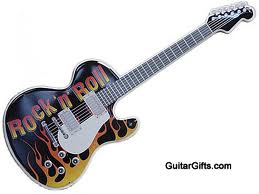 The Guardian published an interesting article about the demise of rock music, quoting research data as evidence: "Last year saw the number of rock songs in the singles chart fall to its lowest level in half a century, with only three tracks appearing in the top 100 best-selling hits in the UK," wrote reporter Alexandra Topping in her article. "The percentage of rock songs plummeted from a sickly 13% in 2009 to a terminal 3% - far behind hip-hop/R'n'B at 47%, pop at 40% and dance 10%, according to figures from MusicWeek."
The Guardian published an interesting article about the demise of rock music, quoting research data as evidence: "Last year saw the number of rock songs in the singles chart fall to its lowest level in half a century, with only three tracks appearing in the top 100 best-selling hits in the UK," wrote reporter Alexandra Topping in her article. "The percentage of rock songs plummeted from a sickly 13% in 2009 to a terminal 3% - far behind hip-hop/R'n'B at 47%, pop at 40% and dance 10%, according to figures from MusicWeek."One important thing that the article doesn't touch on at all is how we define genre terms like "rock." The term is as amorphous as "folk", "hip-hop" and "electronica". Unless the boundaries of the genre are strictly defined -- and how can they be, when artists so often draw on musical ideas from genres outside of their usual purview -- how can anyone take this research seriously?
A couple of lines further down in Topping's piece illustrate my point:
"The news that the best performing rock song of 2010 was Don't Stop Believin', a 30-year-old track from the veteran rock act Journey made popular by US television show Glee, added a further nail to the coffin...The other two rock songs to make it into the top 100 of the year were Hey, Soul Sister by Train and Dog Days are Over by Florence + the Machine."
Most people wouldn't argue with the categorization of Don't Stop Believin' as a rock song. It arguably sets the gold standard for the genre with its even verses and choruses, strong vocal line and blaring electric guitar bridge. But with its hula influence, reggae-like rhythm and melodious, almost dinky, tune, Hey, Soul Sista could just as well fall outside the rock realm. Dog Days are Over has a heavy rock-appropriate feel to it, but the song is angular in tonality and doesn't follow the same tidy pattern of a standard rock song.
So before anyone declares "RIP Rock 'n' Roll," people should stop to ask themselves what exactly constitutes a rock song. It's not so much that rock is dying, but that artists are mixing components of the genre with other musical styles.
P.S. Whatever doldrums the so-called "rock" world is in, it's nice in any case to see songs by two Bay Area bands -- Journey and Train -- becoming such classics.
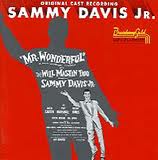 I serve on the panel for an annual theatre award here in the Bay Area -- the Will Glickman Prize -- which honors the best play to have received its world premiere in a Bay Area theatre in the previous year. The award, the most prestigious local accolade for drama, is named for the playwright Will Glickman, a frequent collaborator of Joseph Stein's on Broadway shows like Mr. Wonderful and Plain and Fancy.
I serve on the panel for an annual theatre award here in the Bay Area -- the Will Glickman Prize -- which honors the best play to have received its world premiere in a Bay Area theatre in the previous year. The award, the most prestigious local accolade for drama, is named for the playwright Will Glickman, a frequent collaborator of Joseph Stein's on Broadway shows like Mr. Wonderful and Plain and Fancy.I've been a panelist for the last five years and every year, the process of selecting candidates for my shortlist has been a matter of dread, quickly turned into gratification.
Without fail, when January rolls around, I think to myself that I can barely recall a single new play worthy of being selected. But then, as soon as the panel chairperson sends around a list of all the world premieres that happened in the Bay Area between the previous January and December (as he did yesterday), things quickly change.
Perusing the list invariably brings back happy memories of a bunch of shows and my shortlist of five plays is never hard to fill. I write down my top plays and wonder why I managed to get myself so worked up about the lack of suitable candidates.
Now comes the fun stuff: meeting with the other panelists to haggle over our selections and come up with a winner.
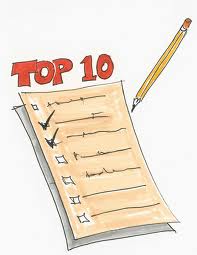 Anthony Tommasini's article in The New York Times on January 7 concerning which composers would appear on his "Top 10 Composers of all Time" list if he were ever to compile such a thing got me thinking about the reasons why rankings can be fun, if not ultimately particularly useful.
Anthony Tommasini's article in The New York Times on January 7 concerning which composers would appear on his "Top 10 Composers of all Time" list if he were ever to compile such a thing got me thinking about the reasons why rankings can be fun, if not ultimately particularly useful.I complained about Gramophone Magazine's list of Top 20 Choirs a couple of weeks ago on this blog.However, a recent visit to the San Francisco Ethnic Dance Festival auditions at the weekend made me see that ranking can have its place.
For the first time in its 33 year history, the festival instituted an interactive element to the proceedings, allowing audience members to fill out the same paperwork as the corps of expert judges hired to choose some 40 of the 125 auditioning companies and soloists to appear in this summer's festival.
I was skeptical when I received a pink sheet detailing "How to Play Fantasy Festival" when I arrived at Zellerbach Hall in Berkeley on Sunday to catch a few of the competing dance ensembles practicing movement styles from geographic areas as diverse as Tibet, Peru and the Middle East. But once the dancing started started, I found that I really enjoyed doing more than just staring at the stage and wondering, in a sort of amorphous general way, if I liked what I saw. (Normally, of course, I would have my 'critic's' hat on and be thinking in depth about the performances. But this time around, with no deadline to meet for once, I was in more of a casual, 'just sit back and watch as any regular audience member would' frame of mind.)
The Fantasy Festival game prompted me to think about and score (from 1-5) each act in terms of performance elements, production components, choreography and relationship to cultural origins. Viewing the performances with this criteria in mind greatly engaged my faculties. I'm curious whether my selections ended up matching the panelists.
It's probably just as well that the audience's scores aren't being taken into consideration by the judges in the actual decision-making process -- with the biggest dance ensembles bringing many people with them to watch the auditions, the selections would doubtless skew towards the groups with the largest fan bases. But the festival organizers are on to a good thing here by introducing a small and lively interactive element into the audition process. I hope they bring it back in the future.
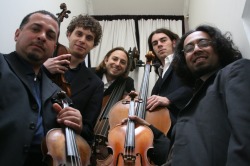 It was, in a way, very gratifying to turn up at the Red Poppy Art House in San Francisco's Mission District on Friday night and have to listen to half of a performance while standing in the cold outside along with a bunch of other people not quite willing to accept the "sold out" sign and hoping that extra seats might open up after intermission. It's not everyday that the management of a small arts venue hosting a chamber music concert has to deal with this problem. It's a good problem to have.
It was, in a way, very gratifying to turn up at the Red Poppy Art House in San Francisco's Mission District on Friday night and have to listen to half of a performance while standing in the cold outside along with a bunch of other people not quite willing to accept the "sold out" sign and hoping that extra seats might open up after intermission. It's not everyday that the management of a small arts venue hosting a chamber music concert has to deal with this problem. It's a good problem to have.The group that attracted such a scene was The Musical Art Quintet, a classically-trained string ensemble which plays original compositions written by group members ingrained with salsa, tango, jazz and klezmer influences. The Quintet is one among a growing number of chamber music outfits working to revitalize the genre by incorporating music from non-classical genres (e.g. The Turtle Island Quartet, The San Francisco Quartet, The Real Vocal Quartet etc.)
In some ways, the Musical Art Quintet didn't give a jaw-dropping performance. The players' technique was a bit slap-dash and the music didn't seem particularly technically-demanding or original in its blend of different musical influences.
But there was so much feeling, love and life to the ensemble's groove that I'm not surprised audiences flocked to the small arts space to hear them.
We were crammed in to the venue so tightly (when we did finally get inside, my friend Erika and I shared a stool at the back of the room which really tested the strength of our gluteal and calf muscles) that we could barely find room to stand up and clap. But stand up people did. Some of them even found space to dance. Imagine that -- dancing to a string quintet!
 This year, VoiceBox, the weekly public radio show that I host and produce for NPR-affiliate KALW about singing, has changed its production model from "live-to-tape" to "fully pre-produced." The first show of the year, which airs tonight from 10-11pm (at www.kalw.org and via the dial at 91.7 FM), welcomes in the new system.
This year, VoiceBox, the weekly public radio show that I host and produce for NPR-affiliate KALW about singing, has changed its production model from "live-to-tape" to "fully pre-produced." The first show of the year, which airs tonight from 10-11pm (at www.kalw.org and via the dial at 91.7 FM), welcomes in the new system.Listeners may perceive a shift in the feel of the show, though it might seem fairly subtle. Changes include more artful fades in and out of the musical excerpts, a higher number of audio samples, many of them shorter than before to maintain the balance between discussion and music, and far fewer verbal splutterings and guffs.
But the change probably means much more to me than it does to anyone outside the process.
There are so many advantages to working with my first-ever full-time producer -- the thoughtful, musically-minded and technically-astute Seth Samuel. For one thing, it's wonderful to have someone other than myself who's invested in the project to bounce ideas off and share the production burden with. The end-product is far more professional, slick and marketable than before (meaning that I can start going after syndication opportunities and the like). Because I don't feel so pressured to make the entire recording session fit to exactly 59 minutes in one take, I feel more relaxed (as do my in-studio guests, I believe) and can take the time to ask just the right question and chop and change ideas on the fly and even in post-production, which was not possible before.
Last night, for example, Seth and I recorded a program for January 14 which traced the development of the vocal melisma from the Baroque Period to the overwrought singing styles of contemporary pop stars like Mariah Carey, Christina Aguilera and Davod Archuleta. I realized only when I got to the station that I had chosen a Broadway recording of Gershwin's Porgy and Bess when it would have made more sense to put in an opera version. (You'll have to listen to the show next Friday to find out how Gershwin fits into this discussion.) In the old, live-to-tape days, I would have had to live with my mistake. But now, all I have to do is source a different version of the track and have Seth drop it into the mix in post-production. Easy peasy.
Still, there are things about the live-to-tape system that I miss. Gone is the thrill and adrenalin rush of having to pull off an hour of radio all in one, as-close-to-flawless-as-possible take. Also, the flow of the recording session used to be much smoother, shorter and in some ways more satisfying. Come hell or high water, the thing would be over in an hour (which always flew by) and my guests and I "lived" the recording session as if it were the live show, listening to the audio samples all the way through and treating the program as if it were going out on the airwaves then and there.
The closest analogy I can think of to illustrate the switch from the live to tape to fully pre-recorded model is that of an actor moving from doing a play at a theatre to working on a television program. The challenge for me, going forward, is to maintain the electric energy of a live show with the slickness of a carefully-honed product.
 People are more precious about food and drink in the Bay Area than perhaps anywhere else in the country. The artisanal, locally-harvested, sustainably-grown approach to dining and drinking that was started by chefs like Alice Waters at Chez Panisse decades ago is now reaching a point where soup isn't soup unless its ingredients have been culled by the light of the moon from hedgerows in Golden Gate Park and bar tenders are arguing about whether cocktail recipes should be copyrighted.
People are more precious about food and drink in the Bay Area than perhaps anywhere else in the country. The artisanal, locally-harvested, sustainably-grown approach to dining and drinking that was started by chefs like Alice Waters at Chez Panisse decades ago is now reaching a point where soup isn't soup unless its ingredients have been culled by the light of the moon from hedgerows in Golden Gate Park and bar tenders are arguing about whether cocktail recipes should be copyrighted.Have things gone too far? Should the making and serving of our daily sustenance be treated as an art form in the same way as, say, dance, drama and sculpture?
On the whole, I think, why not? After all, our senses of taste and smell are no less refined than our ability to see, hear and touch. And I've had culinary experiences in this part of the world that are on a par with my most memorable trips to theatres and museums.
On the other hand, a recent trip to a new coffee bar around the corner from my apartment made me question whether the artistry involved in preparing and serving the things we eat and drink might be reaching a level of pretension that's way over the top.
At the new coffee place, which looked more like a swank cocktail lounge with its high, ornate ceilings, dark wood booths, mid-century modern armchairs and huge paintings swathed in contemporary splashings of color, I ordered a decaf Americano. It was the middle of the afternoon. The barista, who was dressed in a tidy black waistcoat (that's vest to my American readers out there), a white shirt, bow-tie and smart black trousers (pants!), then proceeded to spend 10 minutes making my drink.
First, he found a small cylindrical steel cup and peered into it while turning it around slowly in his hands as if checking for grubs. Then he put the cup on a counter-top scale with old-fashioned brass parts that belied the modernity of the digital reader. He carefully measured out the right number of whole coffee beans (harvested from a large jar with a scoop), adding and removing beans a couple of times in order to reach the precise weight. Then he ground the beans, timing the action using his wrist watch. Then he messed about with a shiny coffee machine for what seemed like an interminable amount of time, pulling levers and fussing with dials. The machine made pleasing swooshing and gurgling noises. Eventually, he barista handed me a plain paper cup with dark brown liquid in it, and said, without smiling: "That'll be $2.50 please."
The beverage was fine, but not exceptional. I prefer the quality of the same drink at my regular morning hang, which takes the barista about 30 seconds to make and costs $1.75.
But if coffee-making can be viewed as a form of performance art, then I certainly got my money's worth.
 I finally got around to catching Darren Aronofsky's film Black Swan at the flicks this past weekend. The movie falls in line with the long tradition of hard-bitten films about ballerinas starting with the 1948 classic The Red Shoes.
I finally got around to catching Darren Aronofsky's film Black Swan at the flicks this past weekend. The movie falls in line with the long tradition of hard-bitten films about ballerinas starting with the 1948 classic The Red Shoes.In Aronofsky's film, which is entertaining to watch at times, cliches of the genre run amok, from bleeding toes to overpowering choreographers equipped with European accents and big libidos. Dancing oneself to death is beyond cliche at this point.
Most ballet movies are scary when you think about it. I don't think Aronofsky is doing anything new or unusual with his psychological thriller of an approach to classical dance.
I only wish the film had moved me more, though Natalie Portman acquits herself well in a demanding role.
 As more arts journalists find themselves leading increasingly peripatetic lifestyles either by choice or necessity, ethical issues that have always existed in the journalism world become increasingly pronounced and thorny.
As more arts journalists find themselves leading increasingly peripatetic lifestyles either by choice or necessity, ethical issues that have always existed in the journalism world become increasingly pronounced and thorny.It's one thing for major media organizations to forbid their employees from going on press junkets, receiving free tickets to arts events and accepting gifts etc. But these rules are quite a bit harder to maintain in an environment where media entities are laying off staffers and increasingly relying on freelancers, while at the same time not remunerating these writers satisfactorily let alone covering their expenses.
The issue is exacerbated even further in the current climate of the "journalist entrepreneur" -- that is, a media person who decides to step out on his or her own and develop a new arts journalism project without the financial backing of any existing organization.
When a journalist starts to be a fundraiser as well as a reporter/commentator, things get tricky. The obvious individuals and organizations from which to solicit funds are those with a vested interest in what you're doing. The perceived (and sometimes real) conflict of interests creates a complex knot that is at times debilitating to the growth of the entrepreneur-journalist's project -- not to mention his or her credibility as a professional member of the media.
So what are the solutions to this problem?
Obtaining funding from "neutral" grant-making bodies is the most obvious way to get "guilt-free" support. But grants are few and far between these days and large numbers of organizations are all fighting over the same small pot of money. Startups tend to fare worse in a poor grant-giing climate than established organizations with a strong track-record.
Transferring out of one journalistic beat into another beat that isn't related to the entrepreneur-journalist's new entrepreneurial project is another potential way of avoiding ethical quandaries. But why would you go and write about sports or agriculture if the basic reason why you're starting the project in the first place is out of a love of cultural journalism? Doesn't make sense.
Simply avoiding covering the work of individuals and organizations that give you money is a third possibility. But many art-makers would much rather maintain the opportunity of getting "free advertising" from a journalist who covers them in an established media outlet than pay to be a sponsor of a new arts media project which is starting out with a negligible audience. So it can be hard to convince like-minded organizations to get behind you. And if you do manage to get funding from some of them, your pool of potential stories diminishes.
In short, it's a can of worms.
If you have any good ideas for how to forge ahead as an entrepreneur in the field of cultural journalism, I would love to hear them. Please send your thoughts my way by commenting at the bottom of this blog post. I'd like to work towards assembling an "Ethics Toolkit" for the new decade of entrepreneur arts journos and your help in this regard would be much appreciated.
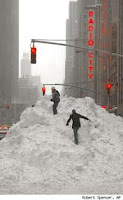 Plans to spend a week in New York experiencing, among other things, "Three Pianos" at New York Theatre Workshop, "Fanciulla del West" with Deborah Voigt and Julie Taymor's "Magic Flute" at the Met, and a New York Phil concert featuring Alan Gilbert and soloists from the orchestra, were dashed on Christmas Day when inclement weather (ie blizzards) interfered with travel eastwards.
Plans to spend a week in New York experiencing, among other things, "Three Pianos" at New York Theatre Workshop, "Fanciulla del West" with Deborah Voigt and Julie Taymor's "Magic Flute" at the Met, and a New York Phil concert featuring Alan Gilbert and soloists from the orchestra, were dashed on Christmas Day when inclement weather (ie blizzards) interfered with travel eastwards.Rather than wait two days to try to make it to New York (including being rerouted via Miami on a red-eye -- urk) I decided to cancel the trip. Instead of rushing around seeing things in a busy city, which is what I do on a daily basis, I spent the week sequestered in the California countryside and mountains. Turns out that this is just what I needed in order to recharge the batteries for the new year. The break also gave me a chance to reflect on what I need to do as an arts journalist in 2011.
A brief summary of my professional resolutions:
1. I need to develop a thicker skin.
2. I need to be more targeted about what arts events I experience.
3. Even in the difficult economy, I mustn't sell myself short.
4. I need to continue to diversify -- but not too much.
5. I need to find a more effective way of balancing journalism with entrepreneurism.
